Top 21 Herbs & Spices You Can Add To Your Skin Care Routine
Upgrade your skincare game with simple and effective remedies from your kitchen.
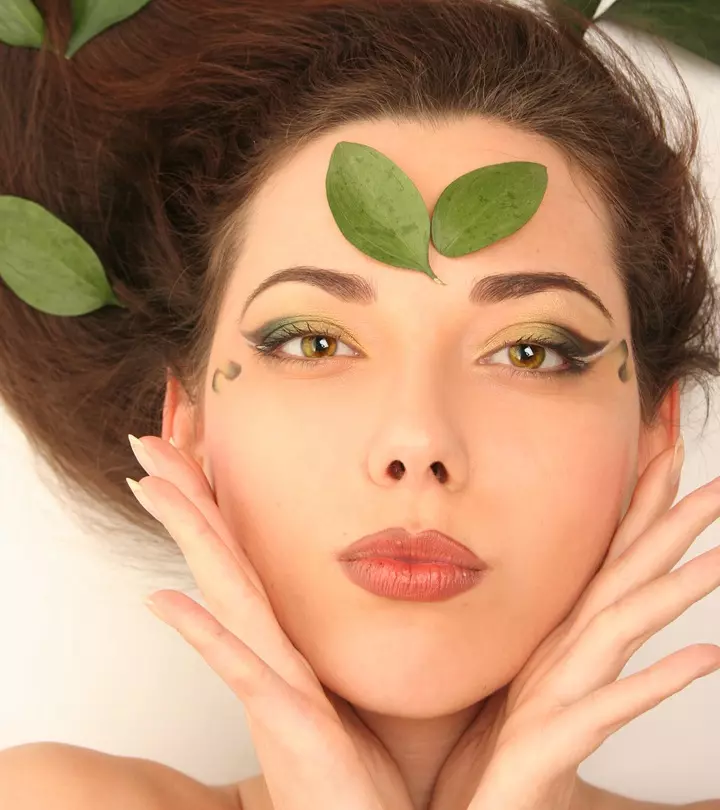
Image: Shutterstock
Want to update your beauty routine and switch to natural plant-based alternatives? You can try using herbs and spices for the skin. Some natural ingredients are not only effective but have also been a part of traditional medicine, providing a holistic approach to skin care. These are considered go-to remedies for skin care issues, including acne, hyperpigmentation, and spots. Several herbs and spices have anti-inflammatory and antioxidant properties that may repair skin tissues and reduce the signs of aging.

In addition, these natural remedies are cost-effective and have fewer side effects compared to chemical-filled products. If you are keen to give them a try, we have curated a list of the best healing herbs and therapeutic spices that may boost your skin health and ways to use them. Keep reading.
In This Article
21 Best Herbs And Spices For Your Natural Skin Care Regimen

Discover the power of nature with these 21 herbs and spices for your skin care routine. They are packed with antioxidants and healing properties and can make your skin healthy and radiant.
1. Aloe Vera
Aloe vera contains vitamins and minerals that are good for the skin. It has been a part of Ayurvedic skincare remedies for ages. It may help produce collagen and elastin fibers that make the skin more elastic and prevent wrinkles (1). It may also treat pigmentation and speed up wound healing by improving blood circulation and preventing cell death around the wound (2).
What You Need
- 2-3 aloe vera leaves
How To Use
- Cut open an aloe vera leaf.
- Scoop out the gel.
- Apply the gel to your skin like a moisturizer.
A YouTube vlogger tried aloe vera on her skin and shared her experience in a video. She said, “I must say the tan has kind of faded away, the marks have faded away very little but it has done a lot better to my skin because the dryness which I had before is not that much right now. It is kind of okay, so if you ask me am I going to continue this? Probably a big yes (i)”.
2. Turmeric
Turmeric has powerful anti-inflammatory properties that treat skin irritation, insect bites, and wounds. It is one of the prominent ingredients used in many home remedies to rejuvenate the skin.
Studies show that it may help control inflammatory and infectious disorders of the skin (3). This herbal medicine may also help treat psoriasisi An immune-mediated skin disease that causes scales and itchy, scaly patches and skin inflammation. and atopici A long-term allergic, inflammatory condition characterized by itchy, red, swollen, and cracked skin. and iatrogenic dermatitis.
What You Need
- 2 teaspoons milk
- 1 teaspoon turmeric powder
How To Use
- Add turmeric powder to the milk.
- Mix them well to make a fine paste.
- Apply the paste all over your face and neck.
- Leave it on for 10-20 minutes.
- Rinse it off with warm water.
 Quick Tip
Quick Tip3. Mint
Mint soothes and refreshes itchy skin. Its strong antibacterial and antioxidant properties may help solve skin problems. It also contains salicylic acid that helps clear clogged follicles. This results in reduced acne and blackheads (4). A study also suggests that the antioxidant activities of mint may help reduce oxidative stress and hyperpigmentation (5). Those looking for herbal beauty tips for glowing skin can incorporate mint leaves or even its essential oil to keep the skin healthy.
What You Need
- 10-15 mint leaves
- 2 tablespoons water
How To Use
- Grind the mint leaves.
- Add some water to make paste.
- Apply the paste to the affected area.
- Leave it to dry.
- Rinse it off with lukewarm water.
4. Green Tea
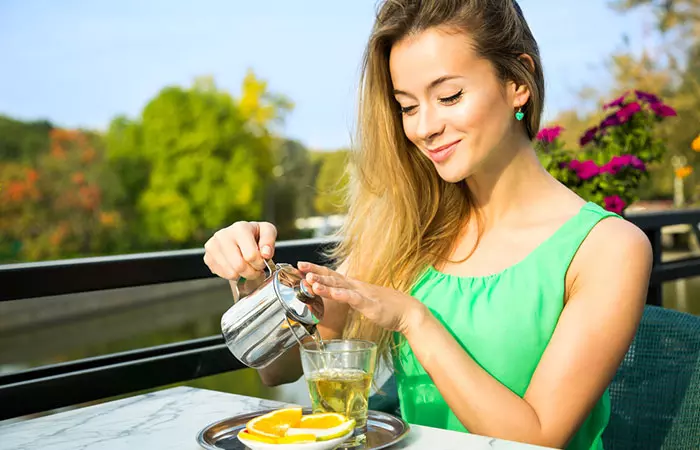
The benefits of green tea are not restricted to weight loss alone. It may also reduce the risk of skin cancer and reactivate dying skin cells (6). Besides, green tea extracts are claimed to protect the skin from UV-induced damage and treat skin disorders like psoriasisi An immune-mediated skin disease that causes scales and itchy, scaly patches and skin inflammation. . However, there is not enough scientific evidence to prove the same.
What You Need
- 1 tablespoon steeped green tea
- 1 tablespoon baking soda
- 1 teaspoon honey
How To Use
- Take one tablespoon of steeped green tea.
- Add one tablespoon of baking soda and honey to it.
- Mix them well to form a fine paste.
- Apply evenly over your face.
- Massage the skin in a circular motion.
- Leave the mask on for 10-15 minutes, then rinse it off with warm water.
5. Chamomile
Chamomile has traditionally been used to treat skin irritation, eczema, sunburn, sores, bruises, wounds, and even ear and eye inflammation (7). It is widely used in organic skincare products for its soothing and softening effect. It is also considered one of the most effective herbs for acne as it may help reduce inflammation. However, more research is needed to prove these benefits of chamomile.What You Need
- One cup brewed chamomile tea
- ½ cup oatmeal
- 1 tablespoon honey
How To Use
- Prepare a cup of chamomile tea.
- Mix it with half a cup of oatmeal and one tablespoon of honey.
- Make a paste of desirable consistency.
- Massage the paste into your skin.
- Rinse it off with warm water after 10-20 minutes.
6. Cinnamon
The high cinnamaldehyde content in cinnamon may promote collagen production. Thus, cinnamon extracts may help reduce the appearance of aging signs by reviving the stagnant collagen synthesis (8). The antioxidant properties of cinnamon may also help protect the skin from free radicals (9). It can also help treat mild to moderate facial acne (10).
What You Need
- 1 tablespoon cinnamon powder
- 3 tablespoons honey
How To Use
- Mix one tablespoon of cinnamon powder with three tablespoons of honey.
- Warm up the mixture in the microwave. Make sure it is not too hot.
- Apply it on your face like a mask.
- Rinse it off after 10 minutes.
7. Neem
The antibacterial and antifungal properties of neem may aid in treating inflammation, infections, and other skin issues (11). Studies suggest that neem is an effective herb that may boost collagen and elastin production. It is also shown to reduce the signs of aging like wrinkles, water loss, thickening, and skin rashes (12).
What You Need
- 8-10 neem leaves
- 1 teaspoon turmeric powder
How To Use
- Crush 8-10 neem leaves.
- Mix it with one teaspoon of turmeric powder to get a paste-like consistency.
- Apply it to your face or the affected area.
- You can leave it on overnight or rinse it off after 20-30 minutes.
 Quick Tip
Quick Tip8. Thyme
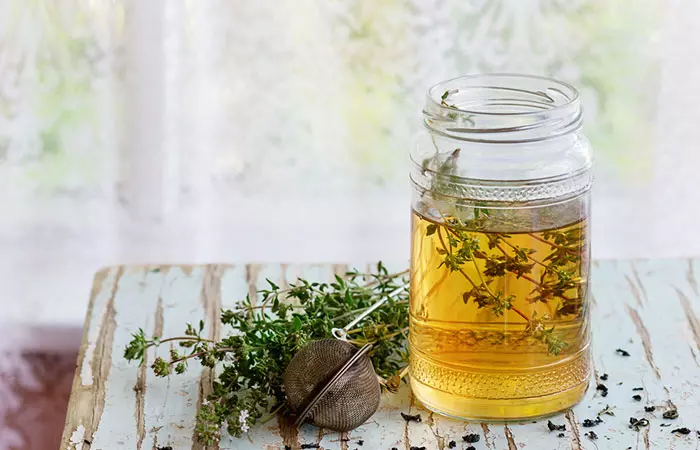
The phenolic compounds in thyme make it a powerful antiseptic. It can replace your toner and may fight against infectious bacteria on the skin. Its antibacterial and antifungal benefits may help treat pain, rashes, wounds, acne, and sores (13).
What You Need
- 2-3 thyme stems
- 1 bowl of water
How To Use
- Soak thyme in hot water for 20 minutes.
- Apply the thyme-infused water to the affected area with a cotton ball.
- Wait for 20 minutes, then rinse it off with warm water.
9. Basil
Basil’s unique combination of antibacterial, antioxidant, anti-inflammatory and analgesic activities helps in treating skin diseases, infections, and acne. It also accelerates wound healing (14).
What You Need
- 10-15 basil leaves
- 1 teaspoon rosewater
How To Use
- Make a paste of basil leaves with rosewater.
- Apply it to the affected area.
- Leave it on for 20 minutes.
- Rinse it off with cold water.
10. Calendula
Calendula boosts skin hydration
and firmness (15). A study shows that ointments and creams that contain calendula are more effective in healing wounds and other skin irritants (2). The anti-inflammatory properties of this flower accelerate wound healing, and the sulfur derivatives in it help dry out acne (16).
What You Need
- 10-15 calendula petals
- 100 ml olive or almond oil
How To Use
- Leave some calendula petals out to dry in the sun.
- Fill a jar (up to 75%) with these petals.
- Add olive oil or almond oil to it.
- Seal it with a lid and leave it in a warm place.
- Shake it every few days for 2-3 weeks.
- Strain it with a fine sieve and separate the flower and oil.
- Apply the oil to the affected area as a moisturizer or use it as massaging oil.
11. Lavender
The topical application of lavender oil stimulates collagen production and improves wound healing. It accelerates the formation of wound-healing tissues and the contraction of a wound (17). Its anti-inflammatory properties may also help manage the inflammation caused by psoriasisi An immune-mediated skin disease that causes scales and itchy, scaly patches and skin inflammation. effectively (18).
What You Need
- Brewed lavender tea
- ¼ cup of alcohol-free witch hazel
- 2 drops of vitamin E oil
How To Use
- Brew lavender tea and let it steep for 20-30 minutes.
- Add the alcohol-free witch hazel and vitamin E oil to the tea.
- Combine all three ingredients and store the mixture in a cool place.
- Apply the mixture to the skin like a toner.
- Shake well before each use.
12. Sage
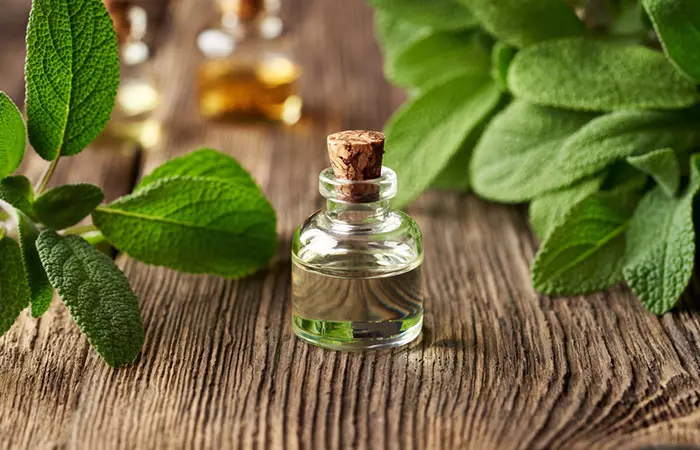
Sage contains antioxidants that fight aging signs and free radicals. It can also reduce UV-induced wrinkles (19). It is also a natural astringent for oily and acne-prone skin.
What You Need
- 1 cup green tea
- 1 teaspoon jojoba oil
- 2 teaspoons sage oil
How To Use
- Brew a cup of green tea and chill in the refrigerator.
- Add a teaspoon of jojoba oil and two teaspoons of sage oil.
- Mix it well.
- Apply the tea to your face as a toner.
13. Witch Hazel
Witch hazel’s anti-inflammatory properties help in soothing sensitive skin and slow down skin aging (20).
The antioxidant and astringent nature of witch hazel help in treating acne, psoriasisi An immune-mediated skin disease that causes scales and itchy, scaly patches and skin inflammation. , eczema, ingrown nails, cracked or blistered skin, and insect bites. It is also useful as an aftershave (21).
What You Need
- ¼ cup of witch hazel
- ½ teaspoon of vitamin C powder
- 6 drops of lavender essential oil
How To Use
- Mix the vitamin C powder, lavender essential oil, and witch hazel.
- Store the mixture in a dark glass bottle.
- Use it as a toner on your face every time you wash it.
14. Oat Straw
Oat straw contains polysaccharides and silicon dioxide in soluble form that help regulate various skin processes. It helps treat inflammatory and seborrheic skin conditions, especially those that cause itching (22).
What You Need
- 500g oat straw
- 2 liters of water
How To Use
- Add oat straw to water.
- Boil it for 30 minutes.
- Mix with your bath water.
- Soak in the bath for as long as you like.
15. Red Clover
A study conducted on rats has found that red clover stimulates collagen production and reduces skin aging (23). However, research on humans is required to prove the same.
It is also said to promote the healing process of the skin, sores, burns, and ulcers with its antispasmodici A drug or agent used to relieve or suppress muscle spasms (painful contractions or tightening of muscles). and expectorant effects (24).
What You Need
- Red clover tea
- 3-4 drops of any essential oil
How To Use
- Brew a cup of red clover tea.
- Add a few drops of any essential oil of your choice.
- Refrigerate it.
- Apply it all over your face or to the affected area like a toner.
16. Horsetail
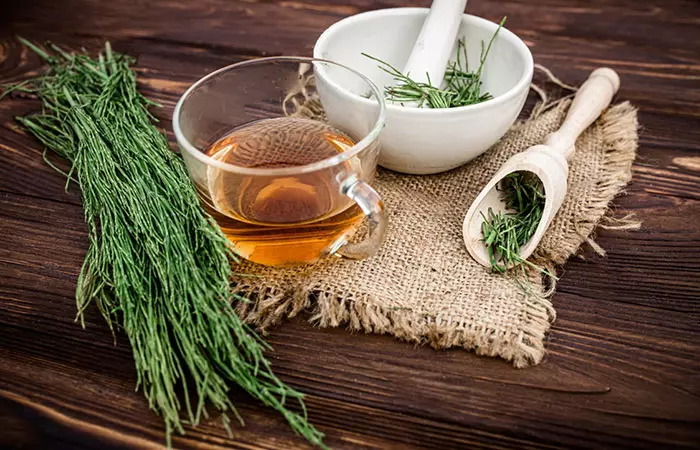
A mixture containing horsetail along with various other plants and seeds was found to inhibit elastase enzymes that break down elastin and collagen. Its silicon content may also reduce the signs of aging like wrinkles and loss of skin elasticity (25). Studies have also shown that the topical application of an ointment with horsetail promotes wound healing and helps relieve pain (26).
What You Need
- 1 cup of water
- 2 teaspoons dried horsetail
- ¾ cup of almond oil
- 2 tablespoons shaved beeswax
How To Use
- Boil the dried horsetail in the water. Let it brew for 10-20 minutes.
- Strain out the horsetail and retain the herbal infusion. Keep it aside.
- Mix the beeswax and almond oil in a cup and place it in a saucepan of water. Heat it up on a low flame until the beeswax dissolves.
- Let it cool for 2 minutes.
- Blend the herbal infusion on high speed with the lid on.
- Slowly add the beeswax mixture to the herbal infusion. Continue adding until the mixture attains a lotion-like consistency.
- Apply the lotion to your face or the affected area.
- Rinse off with warm water after 20 minutes.
17. Alfalfa
Alfalfa extracts have antioxidant and antibacterial properties. This herb may prevent photoaging and oxidative stress related to skin diseases (27). Alfalfa contains genistein that helps accelerate skin repair (28). Therefore, you can use alfalfa extracts to repair skin and reduce the appearance of aging signs.
What You Need
- 2-3 alfalfa stems
- 1 bowl of water
How To Use
- Soak the alfalfa stems in hot water for 20 minutes.
- Apply the water to your face with a cotton ball.
- Rinse it off with warm water after 20 minutes.
18. Chickweed
Chickweed helps boost wound healing. Its emollient properties soothe the skin affected by itching and irritation (29). It can also be used as an antirheumatic, anti-inflammatory, astringent, antipruritici A medication used to treat a variety of skin conditions, like allergies or rashes, and to relieve itching. , and emollient agent. The whole plant can be applied as a plaster on swollen areas due to its anti-inflammatory properties (30).
What You Need
- 8-10 chickweed leaves
- 1-2 teaspoon rosewater
How To Use
- Make a paste of chickweed leaves with rosewater.
- Apply to the affected area.
- Leave it on for 20 minutes.
- Rinse off with cold water.
19. Rosemary
Rosemary contains caffeic and rosmarinic acids that have antioxidant effects. These help prevent the signs of aging caused by the UV rays of the sun. Its antibacterial property is also effective against acne (2).
What You Need
- 3 tablespoons oats
- 1 teaspoon freshly ground rosemary
- 1 teaspoon honey or water
How To Use
- Grind the oats and rosemary together.
- Add some cold water or a teaspoon of honey and mix to form a paste.
- Apply the paste all over your face.
- Scrub it in circular motions.
- Leave it on for 15 minutes, then rinse it off.
20. Dandelion
Dandelion may protect the skin from sun damage and photoaging (31). Its extracts may also reduce acne, and treat warts, eczema, and other skin conditions (32).
What You Need
- 3-4 dandelion roots
- 5-6 calendula flowers (if needed)
How To Use
- Add dandelion roots to boiling hot water. You may also add some calendula flowers.
- Take steam with this water for about 15 minutes.
- Once cooled down, it can also be used as a facial scrub.
21. Oregano
Oregano oil is recognized for its antiseptic attributes. You can apply creams, ointments, and lotions infused with oregano oil to alleviate skin infections and inflammation (33). It contains carvacrol, an active compound that also aids in the restoration and regeneration of injured tissues. It helps inhibit several inflammatory biomarkers in the body (34). This property of oregano oil makes it a potential solution for reducing several inflammatory skin conditions such as acne.
What You Need
- 1-2 drops of oregano essential oil
- 1 tablespoon of carrier oil (e.g., coconut, olive, or jojoba)
How To Use
- Dilute 1-2 drops of oregano essential oil in a carrier oil to avoid skin irritation.
- Apply the diluted oregano oil to the affected areas.
- Leave it on for 10-15 minutes and wash off with lukewarm water.
- Use it once daily for better results.
Wondering if these herbs and spices cause any harmful effects on your skin?
Well, the answer mainly depends on your skin condition. If you have sensitive skin, do a patch test on your forearm before incorporating these herbs into your skincare routine. Consult a healthcare professional for infections and chronic issues that require immediate attention.
To get the best benefits of the herbs, it is essential to find the best quality ingredients. Let’s understand how.
Key Takeaways
- You can add herbs and spices to your skin care regime to manage acne and pigmentation spots.
- Aloe vera, mint, green tea, thyme, basil, calendula, red clover, horsetail, and alfalfa show effective results if included in one’s skin care routine.
- They also combat signs of aging, soothe skin irritation, and help with faster wound healing.
How To Choose Quality Herbs And Spices For Skin Care
Here are some tips you can keep in mind when choosing herbs and spices for your skincare!
- Choose certified organic, non-GMO herbs and spices that were cultivated without harmful pesticides and chemicals that could irritate your skin.
- Look for vibrant colors and strong aromas, as these are indicators of freshness and potency.
- Buy from reputable suppliers that provide information on the origin and sourcing methods of their herbs and spices.
- Select whole or minimally processed herbs and spices as they retain more of their natural active compounds.
- Ensure herbs and spices are stored in airtight, dark containers to protect them from light, air, and moisture, which can degrade their quality.
Infographic: Top 5 Herbs & Spices For Glowing Skin
Many women across the globe have chosen to shift to chemical-free, plant-based products that are safe and beneficial for skin. You can also make your own face packs with such ingredients from your kitchen. In the infographic below, we have listed the top 5 easy-to-find herbs and spices known for their anti-inflammatory, anti-aging, and antimicrobial properties. Start using them today to keep your skin radiant.
Some thing wrong with infographic shortcode. please verify shortcode syntaxHerbs and spices have been used to treat several skin issues for ages. The antioxidant and anti-inflammatory properties of several herbs and spices make them wonderful choices to solve issues like acne, hyperpigmentation, blackheads, and dark spots, and for holistic health. In addition, you can use herbs and spices for skin rejuvenation and moisturization. The 20 herbs discussed here may help you achieve healthy skin, minimize the signs of aging, heal skin irritations, and get glowing skin. The more consistent you are, the better the results will be. Also, always do a patch test before using these to avoid adverse effects.
Frequently Asked Questions
How can herbs and spices be added to daily skincare routine?
Herbs and spices can be infused into face oils, added to facial masks, and scrubs, or used in toners for daily skincare.
What herbs tighten the skin?
Turmeric, Porphyra red algae, comfrey, aloe vera, and witch hazel are some herbs that help tighten skin. These herbs are commonly used in many different Ayurvedic face packs for glowing skin as they help maintain skin radiance.
What spices help you look younger?
Cinnamon, turmeric, ginger, and ginseng are some spices that have anti-aging properties and may help you look younger.
Can herbs and spices help with specific skin conditions, such as acne or eczema?
Certain herbs and spices, such as turmeric, mint, thyme, witch hazel, and chamomile are traditionally known to reduce redness, irritation, and inflammation associated with acne and eczema. However, we recommend using them under the guidance of a dermatologist to avoid adverse effects or interactions with other medications.
Are there any potential side effects of using herbs and spices for the skin?
Yes. Some common side effects include skin irritation, itching, redness and swelling, photosensitivity, and interactions with other medications. We recommend doing a patch test before adding a new herb or spice to the skincare routine.
Illustration: Best Herbs And Spices For Skin Care: Benefits And How To Use Them
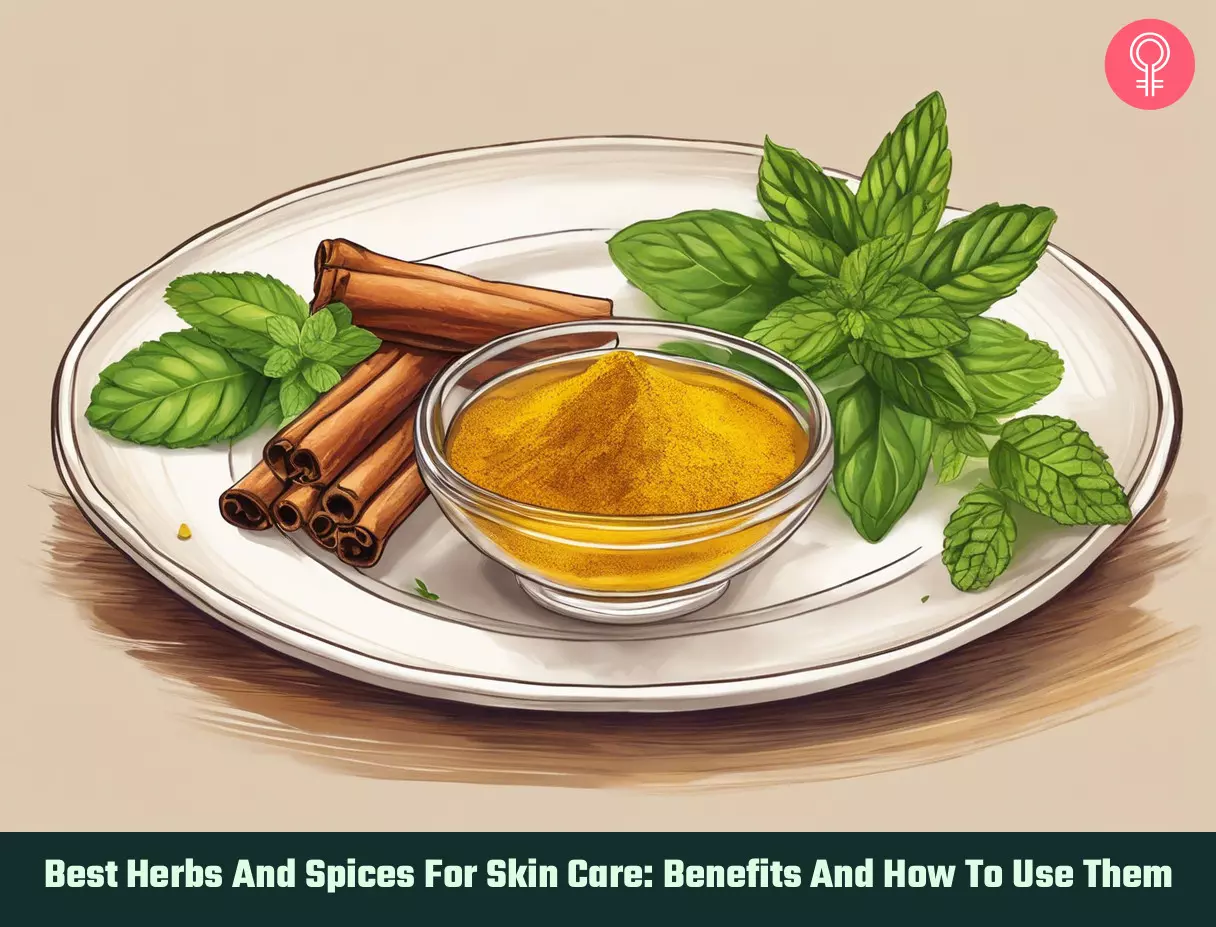
Image: Stable Diffusion/StyleCraze Design Team
Explore the different herbs that work wonders for your skin. From soothing inflammation to enhancing glow, learn how these natural remedies can transform your skincare routine
Personal Experience: Source
StyleCraze's articles are interwoven with authentic personal narratives that provide depth and resonance to our content. Below are the sources of the personal accounts referenced in this article.
i.1 WEEK ALOE VERA CHALLENGE! REAL RESULTS! Will it clear acne and fade scars?? | Skin care challengehttps://www.youtube.com/watch?v=Wn2iaJb5DPo
References
Articles on StyleCraze are backed by verified information from peer-reviewed and academic research papers, reputed organizations, research institutions, and medical associations to ensure accuracy and relevance. Read our editorial policy to learn more.
- Aloe Vera: A Short Review
https://www.ncbi.nlm.nih.gov/pmc/articles/PMC2763764/ - Plants used to treat skin diseases
https://www.ncbi.nlm.nih.gov/pmc/articles/PMC3931201/ - Potential of Curcumin in Skin Disorders
https://www.ncbi.nlm.nih.gov/pmc/articles/PMC6770633/ - Therapeutic agents and herbs in topical application for acne treatment
https://onlinelibrary.wiley.com/doi/10.1111/j.1468-2494.2011.00647.x - Antioxidant Activity and Volatile and Phenolic Profiles of Essential Oil and Different Extracts of Wild Mint (Menthalongifolia) from the Pakistani Flora
https://www.hindawi.com/journals/jamc/2013/536490/ - Green Tea and the Skin
https://www.researchgate.net/publication/7812748_Green_tea_and_the_skin - Chamomile: A herbal medicine of the past with bright future
https://www.ncbi.nlm.nih.gov/pmc/articles/PMC2995283/ - Cinnamon extract promotes type I collagen biosynthesis via activation of IGF-I signaling in human dermal fibroblasts
https://pubmed.ncbi.nlm.nih.gov/22233457/ - Cinnamon: A Multifaceted Medicinal Plant
https://www.ncbi.nlm.nih.gov/labs/pmc/articles/PMC4003790/ - Efficacy of topical cinnamon gel for the treatment of facial acne vulgaris: A preliminary study
http://bmrat.org/index.php/BMRAT/article/view/515 - Medicinal properties of neem leaves: a review
https://pubmed.ncbi.nlm.nih.gov/15777222/ - Topical application of neem leaves prevents wrinkles formation in UVB-exposed hairless mice
https://www.sciencedirect.com/science/article/abs/pii/S1011134416303323 - Formulation and Characterization of Potential Antifungal Oleogel with Essential Oil of Thyme
https://www.ncbi.nlm.nih.gov/labs/pmc/articles/PMC5933022/ - Tulsi – Ocimum sanctum: A herb for all reasons
https://www.ncbi.nlm.nih.gov/pmc/articles/PMC4296439/ - Evaluation of various functional skin parameters using a topical cream of Calendula officinalis extract
https://www.researchgate.net/publication/260228102_Evaluation_of_various_functional_skin_parameters_using_a_topical_cream_of_Calendula_officinalis_extract - Topical Herbal Therapies an Alternative and Complementary Choice to Combat Acne
https://scialert.net/fulltext/?doi=rjmp.2011.650.669 - Wound healing potential of lavender oil by acceleration of granulation and wound contraction through induction of TGF-β in a rat model
https://www.ncbi.nlm.nih.gov/pmc/articles/PMC4880962/ - Anti-psoriatic effect of Lavandulaangustifoliaessential oil and its major components linalool and linalyl acetate
https://www.sciencedirect.com/science/article/abs/pii/S0378874120330087 - Clareol isolated from Salvia officinalis improves facial wrinkles via an antiphotoaging mechanism
https://pubmed.ncbi.nlm.nih.gov/27466023/ - Use of formulations for sensitive skin improves the visible signs of aging including wrinkle size and elasticity
https://www.ncbi.nlm.nih.gov/labs/pmc/articles/PMC6559254/ - North American Virginian Witch Hazel (Hamamelisvirginiana): Based Scalp Care and Protection for Sensitive Scalp Red Scalp and Scalp Burn-Out
https://www.ncbi.nlm.nih.gov/labs/pmc/articles/PMC4158622/ - Medicinal plants used in treatment of inflammatory skin diseases
https://www.ncbi.nlm.nih.gov/labs/pmc/articles/PMC3834722/#CIT0001 - Effects of isoflavones from red clover (Trifoliumpratense) on skin changes induced by ovariectomy in rats
https://pubmed.ncbi.nlm.nih.gov/17078110/ - Seasonal variation of red clover (Trifolium pratense L., Fabaceae) isoflavones and estrogenic activity
https://pmc.ncbi.nlm.nih.gov/articles/PMC1903374/ - Study of the refirming effect of a plant complex
https://pubmed.ncbi.nlm.nih.gov/18505506/ - The Effect of Equisetum Arvense (Horse Tail) Ointment on Wound Healing and Pain Intensity After Episiotomy: A Randomized Placebo-Controlled Trial
https://www.ncbi.nlm.nih.gov/labs/pmc/articles/PMC4441770/ - Antioxidant Activity and Cytotoxicity of Medicago sativaL. Seeds and Herb Extract on Skin Cells
https://www.ncbi.nlm.nih.gov/labs/pmc/articles/PMC7590823/ - Alfalfa Nanofibers for Dermal Wound Healing
https://pubmed.ncbi.nlm.nih.gov/31369233/ - Looking backward to find the path forward
https://www.ncbi.nlm.nih.gov/labs/pmc/articles/PMC3141300/ - Medicinal plants of the family Caryophyllaceae: a review of ethno-medicinal uses and pharmacological properties
https://www.ncbi.nlm.nih.gov/labs/pmc/articles/PMC5481791/ - Dandelion Extracts Protect Human Skin Fibroblasts from UVB Damage and Cellular Senescence
https://www.ncbi.nlm.nih.gov/labs/pmc/articles/PMC4630464/ - Dandelion (Taraxacum Genus): A Review of Chemical Constituents and Pharmacological Effects
https://pmc.ncbi.nlm.nih.gov/articles/PMC10343869/ - Essential Oils of Oregano: Biological Activity beyond Their Antimicrobial Properties
https://pmc.ncbi.nlm.nih.gov/articles/PMC6152729/ - Anti-inflammatory, tissue remodeling, immunomodulatory, and anticancer activities of oregano (Origanum vulgare) essential oil in a human skin disease model
https://www.ncbi.nlm.nih.gov/pmc/articles/PMC5801825/
Read full bio of Dr. Anjali Asok
Read full bio of Swathi E
Read full bio of Anjali Sayee
Read full bio of Monomita Chakraborty
















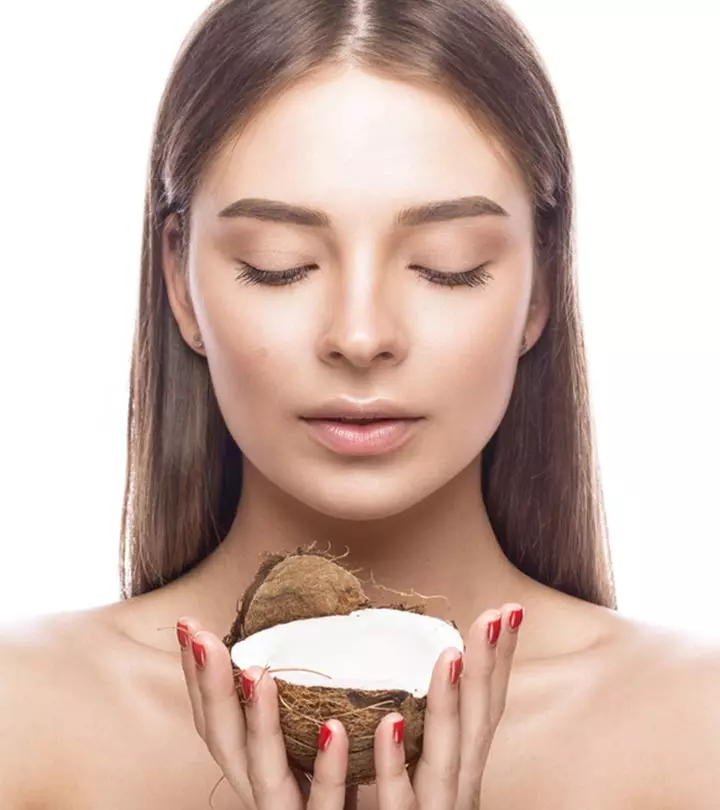
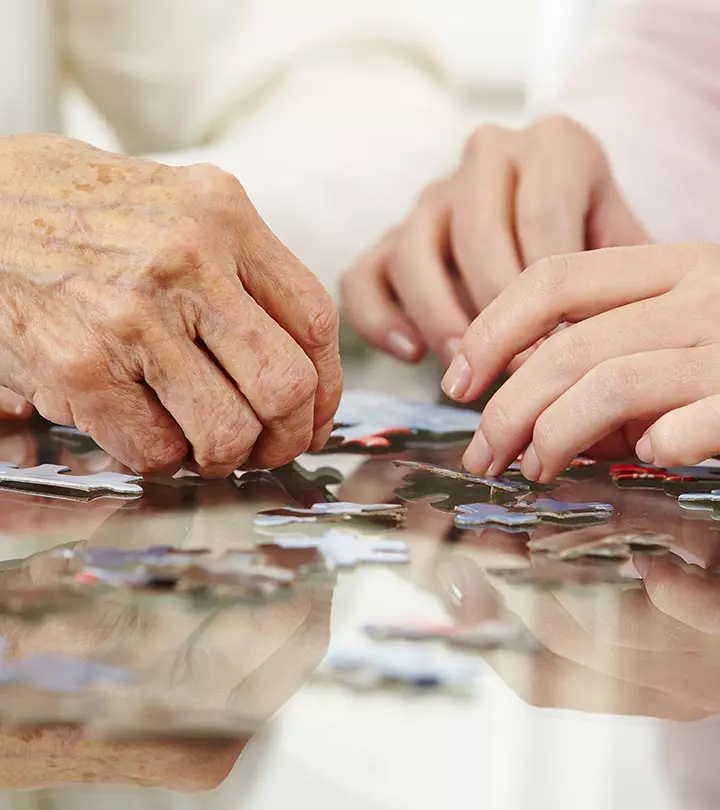




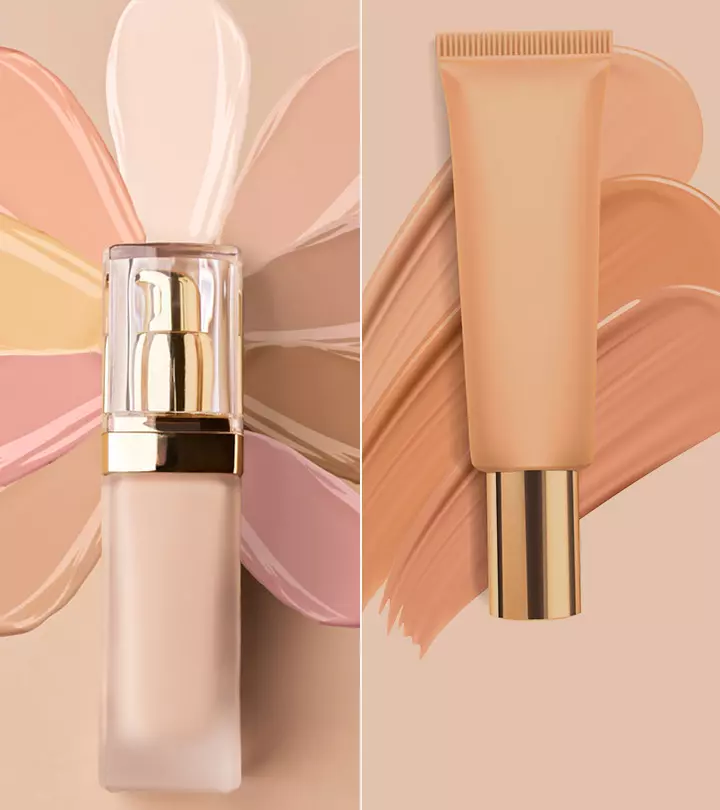
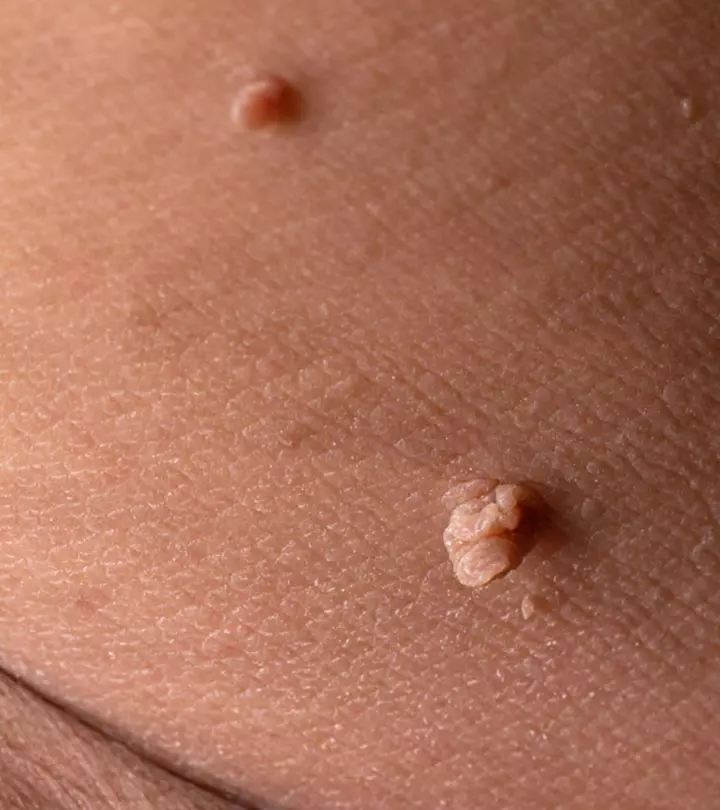

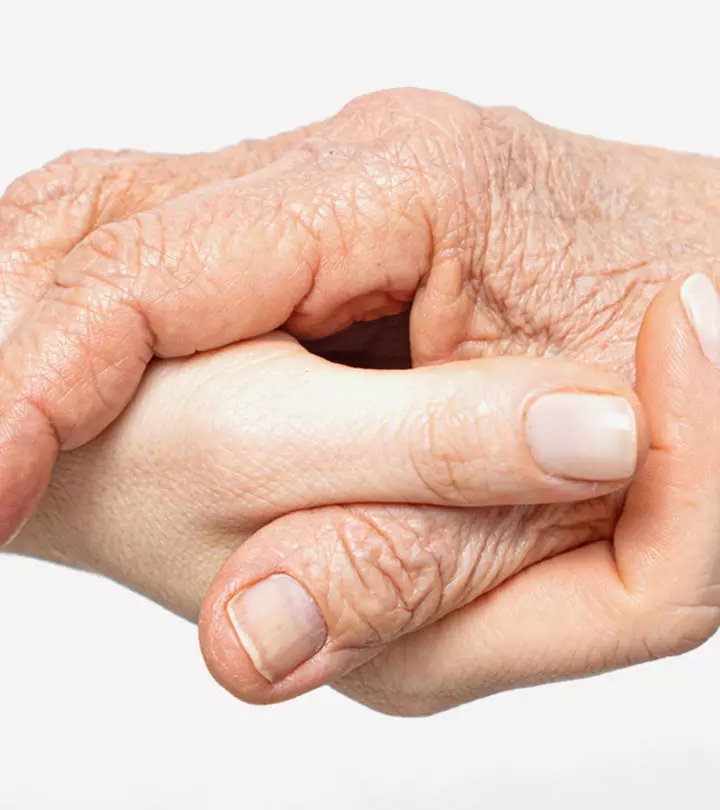
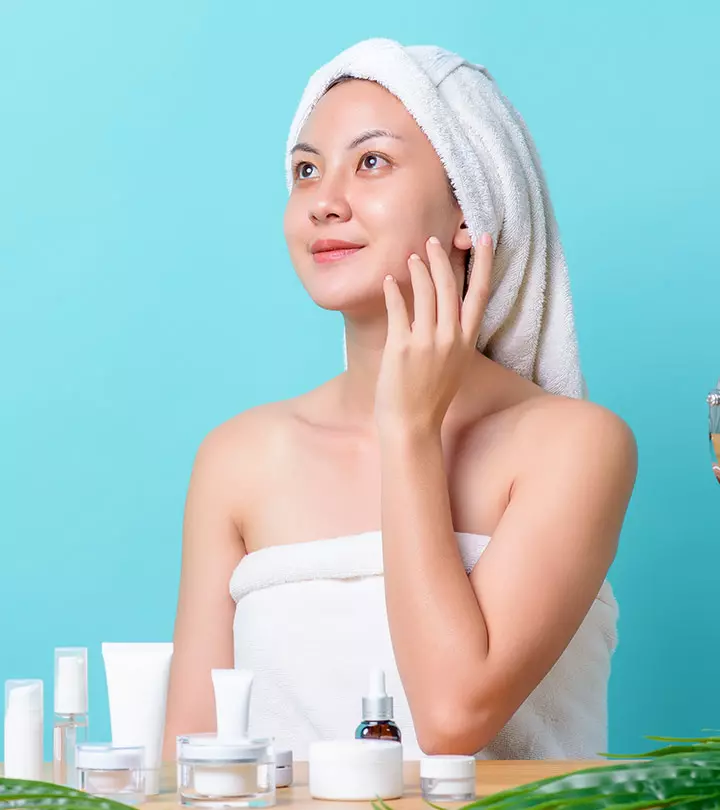
Community Experiences
Join the conversation and become a part of our empowering community! Share your stories, experiences, and insights to connect with other beauty, lifestyle, and health enthusiasts.